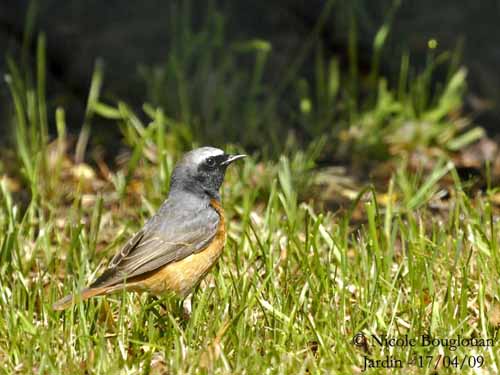
Common Redstart
Phoenicurus phoenicurus
Passeriforme Order – Muscicapidae Family
BIOMETRICS:
Length: 14 cm
Weight: 11-23 g
DESCRIPTION:
Common Redstart is a beautiful passerine, summer visitor in Europe. Its typical call “twiit-twiit” announces their return in our backyards!
Adult male has dark blue-grey back and wings. Rump and outer rectrices are orange-rufous, whereas central rectrices are blackish.
On the underparts, breast and flanks are orange-rufous. Belly and undertail coverts are buffy-white.
On the head, face, chin and throat are black. Nape is dark blue-grey. Forecrown is white above the forehead, extending above the eyes and melting into the nape.
Bill is black. Eyes are dark brown. Legs and feet are blackish.
Fr: Rougequeue à front blanc
All : Gartenrotschwanz
Esp : Colirrojo Real
Ital: Codirosso
Nd: Gekraagde Roodstaart
Russe: Обыкновенная горихвостка
Sd: Rödstjärt
Photographers :
Eugène Montocchio
Galerie Photos Nature
Jean Marc Rabby
Des Ailes et des Plumes
Nicole Bouglouan
PHOTOGRAPHIC RAMBLE
Text by Nicole Bouglouan
Sources:
HANDBOOK OF THE BIRDS OF THE WORLD Vol 10 by Josep del Hoyo-Andrew Elliott-David Christie - Lynx Edicions - ISBN: 8487334725
THE COMPLETE BOOK OF BRITISH BIRDS – Written by “Royal Society for the Protection of Birds” experts - Préface de Magnus Magnusson - Michael Cady- Rob Hume Editors - ISBN: 0749509112
Pájaros de España (JL Beamonte)
Wikipedia (Wikipedia, The Free Encyclopedia)
Page Order Passeriformes
Summary cards

Female has brown upperparts with orange-rufous rump. Tail is as in male. Underparts are dull orange tinged creamy-white. Head is brown and lacks the white patch on the crown. She is duller overall.
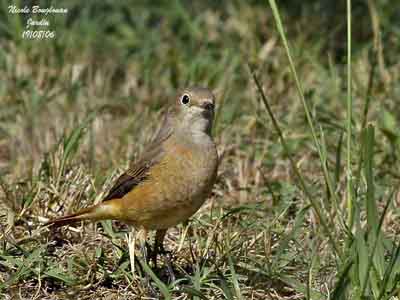
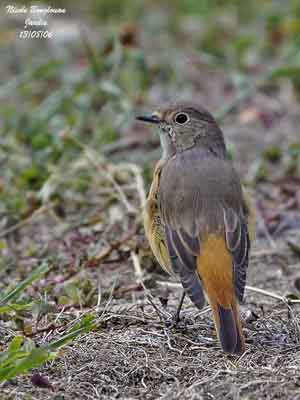
Juvenile is brown with buffy-white spotting overall. Tail is as in adults. Flight feathers are dark brown with buffy edges.
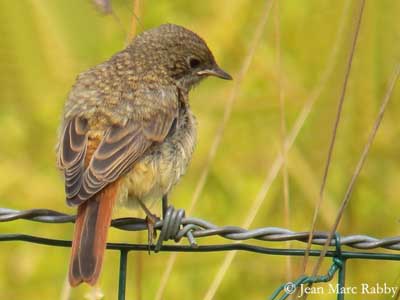
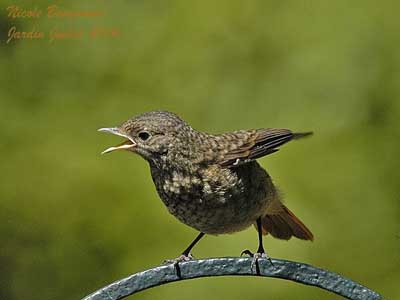
We find two subspecies, “phoenicurus” and “samamisicus”. The latter shows white edges on secondary and tertial flight feathers, forming an indistinct wing-patch.
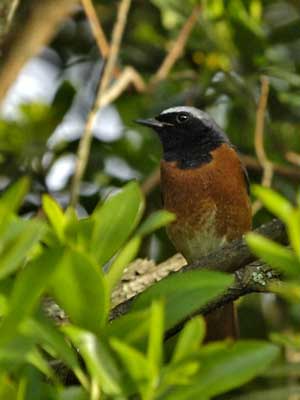
VOICE:
Common Redstart calls include the typical “twick-twick” or “hwii-tik-tik”, a plaintive “hwiiit” and a sharp “tchak”.
The song by the male is a sweet melancholy series of two phrases, the first with clear whistled notes, and the other with mix of squeaks, hard and buzzy notes. It may utter several phrases per minute, or a single continuous song. Female rarely sings.
Aggressive call against intruders is a harsh warbler. After mating, the male gives its sweet song in flight.
HABITAT:
Common Redstart breeds in various habitats, from open forests with clearings, woodlands and urban parks, to subarctic mountain forests in northern parts of the range.
But the species is also found in several types of habitats such as heaths with scattered mature trees, wooded areas along streams, open hilly country with stone walls or monuments for nesting, old gardens, cemeteries and suburban areas.
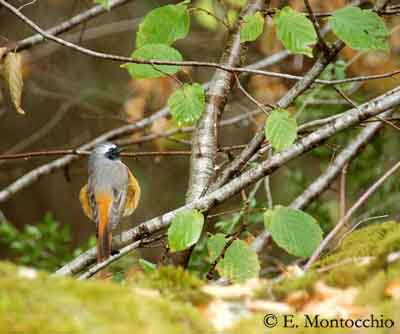
It winters in semi-arid thorny steppes, thickets, dry open woodlands and riverine gardens, up to 2000 metres of elevation.
During the migrations, it may be seen in more scrubby areas, in palm groves and tamarisks.
RANGE:
Common Redstart breeds in Europe. It winters in sub-Saharan Africa, from Senegal to Ethiopia and Kenya, and eastwards to Yemen.
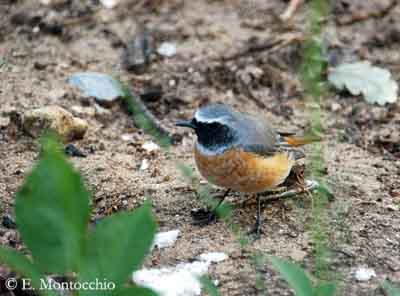
BEHAVIOUR:
Common Redstart feeds on invertebrates and berries. It forages in bushes and lower branches in trees. It flies out from a perch to catch some prey on the ground, and returns to the perch to eat it. It often performs short sallies and pursues insects in flight. It also flutters in front of trunks, branches and vegetation, in order to catch invertebrates.
Usually, the female gleans in foliage whereas the male performs more aerial sallies.
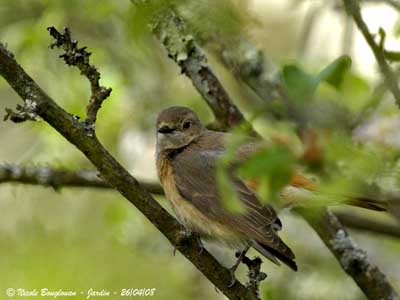
Male is conspicuous by its plumage, but also by the shivering tail following all the body movements. The tail moves up and down and very quickly.
At the beginning of the breeding season, the male sings much more and performs short flights. The female adopts an upright stance, while the male approaches with quivering and raised wings, fanned tail dropped against the ground or the branch where they perch, in order to display the bright colours of the rump and outer rectrices, and of the breast. In the same way, the pure white head patch is displayed too.
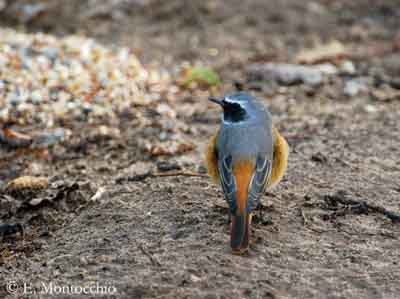
The male chooses the nest-site and then, it has to attract a female. It stays in the cavity with only the head and the breast outside or on the contrary with the fanned tail outside. It also performs zigzag flights among the trees and at the end, sometimes copulation occurs.
These displays may last until the beginning of the incubation.
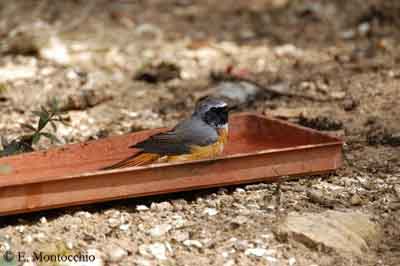
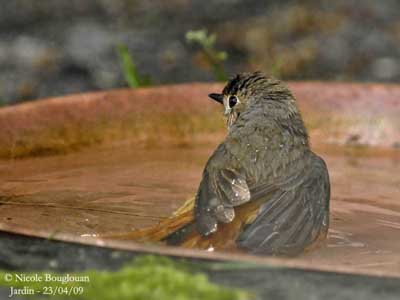
Common Redstart is migratory. The birds leave the breeding territories in autumn, moving from mid-August to early November, and return between late February and early March or April.
FLIGHT:
Common Redstart performs agile flight among the trees, and flutters to catch insects from the vegetation.
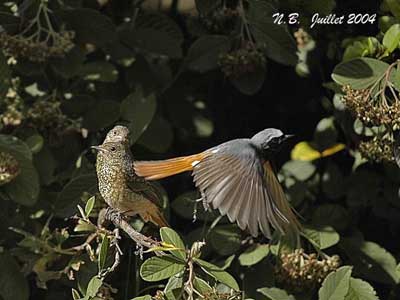
REPRODUCTION:
Breeding season varies according to the range, but occurs in spring.
Usually, the Common Redstart’s nest is made in various cavities, holes in trees or in stone walls, roofs… between one and six metres above the ground.
The cup is made with grass, roots and moss, and the interior is lined with hair and feathers. The female builds the nest alone while the male sings loudly at close proximity.
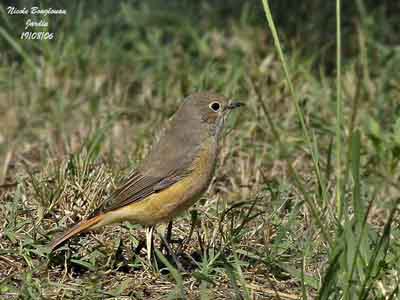
Female lays 5-7 pale blue eggs, sometimes speckled dark reddish. Incubation lasts about 12-14 days. Chicks have dark grey down on head and back. They are fed by both parents.
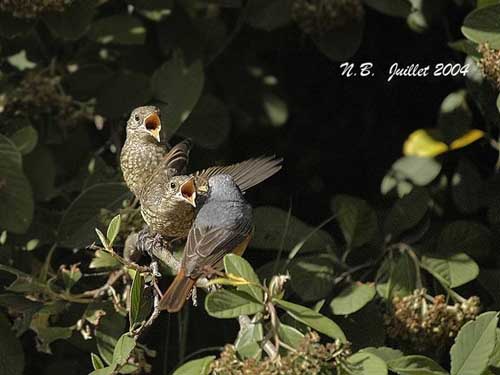
Young fledge about 15-18 days after hatching, and adults feed them for three weeks more. The female may start a second brood while the male feeds the first young which are independent at one month. They remain in small groups of 2-3 birds and disperse in gardens.
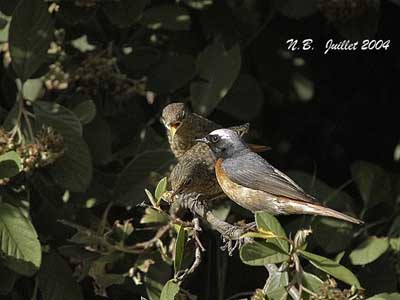
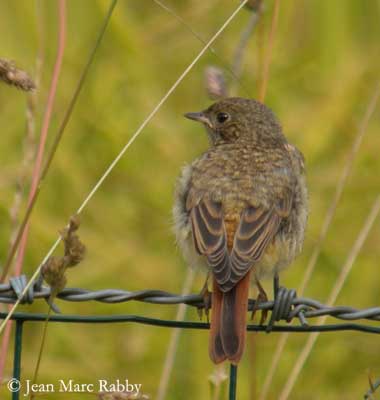
DIET:
Common Redstart feeds on invertebrates such as larval beetles of several families, flies, ants, bees, wasps, damselflies, spiders, molluscs and earthworms. They also consume berries and fruits from various plants.
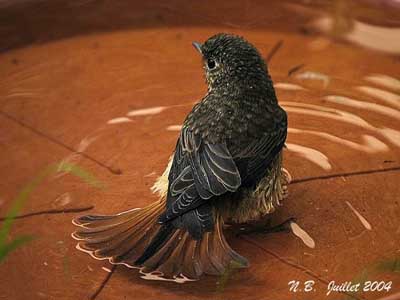
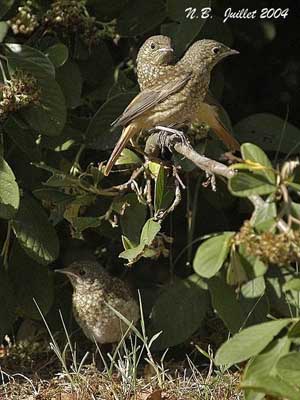
PROTECTION/THREATS/ STATUS:
European populations are considered stable, but steady declines occurred in Spain and other parts of the range.
Deforestation is the main threat for these cavity-nesters, but fortunately, the species is able to adapt to other types of nest-sites such as old buildings, stone walls and even nest-boxes.
However, Common Redstart populations are not globally threatened at this moment.